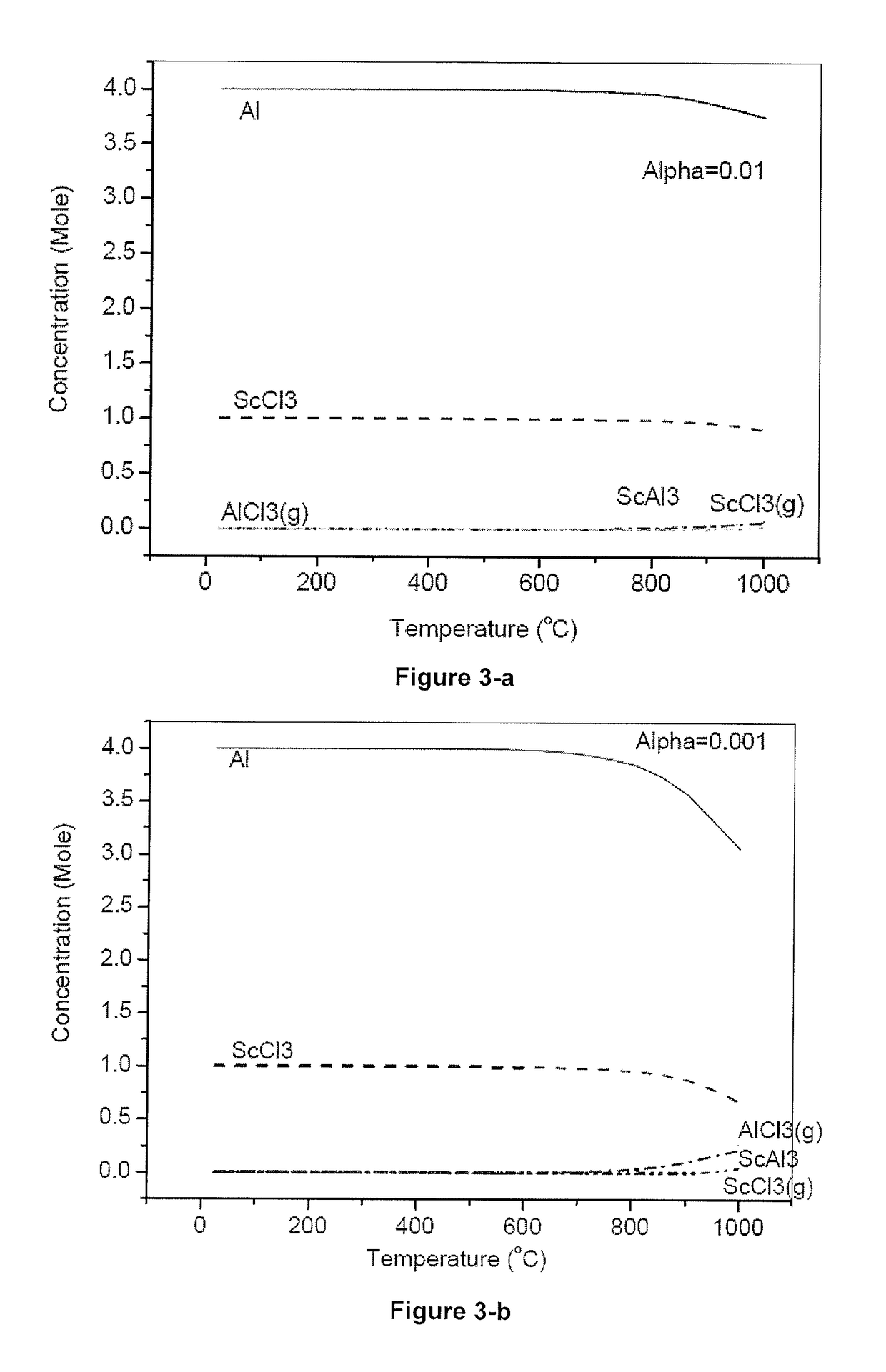Production of aluminium-scandium alloys
a technology of aluminium and sc metal, which is applied in the field of process for producing aluminium sc alloys, can solve the problems of increasing the current limited market, slow alloying of sc metal directly with aluminium melt, and current techniques for producing al—sc alloys have faced a number of difficulties, and achieve the effect of reducing the partial pressure of aluminium chloride and low cos
- Summary
- Abstract
- Description
- Claims
- Application Information
AI Technical Summary
Benefits of technology
Problems solved by technology
Method used
Image
Examples
example 1
n of Al3Sc Powder
[0136]5 g of Al powder with a mean particle size of less than 15 microns is mixed with ScCl3 powder at a molar ratio of 4Al to 1ScCl3. The materials are then placed inside a quartz tube and heated at temperatures between 600° C. and 900° C. at a pressure less than 100 mbar. The temperature is first held at 600° C. for 10 minutes, then increased to 650° C. for 10 minutes and to 700° C. for 10 minutes and then to 800° C. for 10 minutes and 900° C. for 10 minutes. The materials are then discharged and analysed. The product is a powder made of Al3Sc with a small amount of Sc. FIG. 8 shows an XRD spectrum of the materials, clearly indicating the dominance of lines corresponding to Al3Sc.
example 2
n of Al3Sc Powder
[0137]5 g of Al powder with a mean particle size of less than 15 microns are mixed with ScCl3 powder at a mole ratio of 4Al to 1ScCl3. The materials are then placed inside a quartz tube and heated at temperatures between room temperature and 900° C. at a pressure less than 10 mbar. The temperature is increased by steps of 100° C. with a total heating time of 60 minutes. The materials are then discharged and analysed. The product is a powder made of Al3Sc.
example 3
n of Al3(Sc—Zr Powder)
[0138]5 g of Al powder with a mean particle size of less than 15 microns are mixed with ScCl3 powder and ZrCl4 powder at a mole ratio of 4Al to 0.5 ScCl3 and 0.5 ZrCl4. The materials are then placed inside a quartz tube and heated at temperatures between room temperature and 900° C. at a pressure less than 10 mbar. The temperature is increased by steps of 100° C. with a total heating time of 60 minutes. The materials are then discharged and analysed. The product is a powder made of Al3(Sc—Zr).
PUM
| Property | Measurement | Unit |
|---|---|---|
| partial pressure | aaaaa | aaaaa |
| temperature | aaaaa | aaaaa |
| temperature | aaaaa | aaaaa |
Abstract
Description
Claims
Application Information
 Login to View More
Login to View More - R&D
- Intellectual Property
- Life Sciences
- Materials
- Tech Scout
- Unparalleled Data Quality
- Higher Quality Content
- 60% Fewer Hallucinations
Browse by: Latest US Patents, China's latest patents, Technical Efficacy Thesaurus, Application Domain, Technology Topic, Popular Technical Reports.
© 2025 PatSnap. All rights reserved.Legal|Privacy policy|Modern Slavery Act Transparency Statement|Sitemap|About US| Contact US: help@patsnap.com



